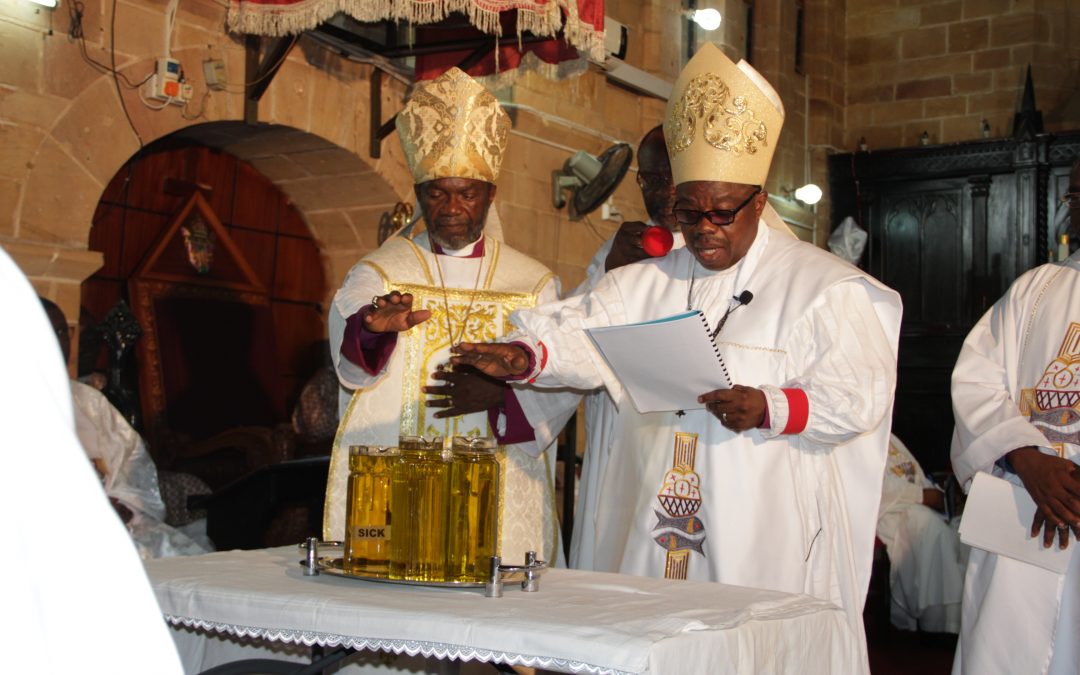The Holy Week is a week of intense prayer and meditation in understanding the events of the Passion of Our Lord.
Brief History: Historically the entire Passion of the Holy Week took place in Jerusalem. The probable date, is recorded to be around the year A.D. 30. During the Passover Week, from the 9th to the 16th of the Jewish Month Nisan which in our calendar is around March to April. During the occasion, Jerusalem is often crowed with pilgrims (see Acts 2:5-11). The political environment was such that the Jewish nation was ruled by the Romans. The Roman Governor at the time was Pontius Pilate, whiles the Jews themselves were led by the High Priest in the person of Caiaphas and the Council of 70 elders, called the Sanhedrin. (see Matthew 26:3-4) Galilee where Jesus came from was in the north region of Palestine and the governor there was Herod.
What is the origin of the Holy Week?
Jesus of Nazareth for three years was becoming popular through his preaching, miracles and the claim of being the Messiah. The High Priest and Jewish leaders saw in him a threat to their authority over the people. The Leaders planned to execute Jesus so as to end this threat to their power. However, as a subject state, the Sanhedrin could not put anyone to death, only the Roman Governor had the power to condemn a criminal to death. Therefore, the opportune time was the Passover Week, with great multitude of pilgrims in Jerusalem – the Holy Week was set. (see John 11:45-57)
How does Palm Sunday begin the Holy Week?
Palm Sunday is the first Sunday that begins the Holy Week. Even though Jesus knew of the plot of the Jewish leaders, on that Sunday morning of Passover Week when pilgrims were traveling to Jerusalem, Jesus and his disciples openly went there from Bethawy. Before the journey, he sent his disciples to a village to go and untie a donkey for the triumphant procession.
As Jesus saw the Temple and the city spread out before him, he predicted its destruction and wept over the city. Going to Jerusalem great excitement prevailed as men and women spread palm branches and cloaks for his donkey to ride on. This event is what is called “Palm Sunday” (see Luke 12:12-14)
What happens on Holy Monday to Wednesday?
A lot of Parishes and congregation use the Holy Week of Monday to Wednesday for revivals, retreats and crusades as they prepare themselves for the Passion of Christ. But in Jerusalem, a lot of things were going on, even though we are not told all the activities that went on. On Monday of the Holy Week for instance, Jesus would come to Jerusalem in the morning teaching and discussing in the Temple. At night he would leave the city, cross the Kidron and withdraw to the Mount Olives where lay Bethany and Gethsemane. For example, on that fateful Monday Jesus cursed the fig-tree which had leaves but no fruits. (see Matthew 21:18-43) On Tuesday of the Holy Week, the Scribes and a section of the Jewish authorities challenged the authority of Jesus. For example, the question of payment of taxes to Caesar, and the Sadducees question about a woman with seven husbands and the resurrection, and the question of the Greatest Commandment. Jesus answered them all. Leaving the city, he crossed over to Mt Olivet and sadly predicted the destruction of the Temple and his death. (see Matthew 21:23-27), (Matthew 22:15-22; 23-33; 34-40)
The Holy Wednesday is also called “Spy Wednesday”. The High Priest and the Jewish authorities wanted to eliminate Jesus. They needed to act fast while he was still in the city, before the Passover. At their meeting help came from an unexpected source: from Judas Iscariot, one of the twelve disciples, who agreed to betray his master for thirty pieces of silver. The Sanhedrin and the high priest were glad that Jesus could be arrested easily and secretly.
What is Holy Thursday or Maundy Thursday?
The term “Maundy” comes from the Latin Word “mandatum” meaning ‘command’. It is referred to the word Jesus give to his disciples. A new commandment I give to you, that you love one another; just as I have loved you, you also are to love one another. (John 13:34-35)
What actually happens on Maundy Thursday?
On Holy Thursday or Maundy Thursday two services occur in the Anglican Church the first service is called “Chrism Mass” and the second one is Mass of the Lord’s Supper.
Mass of Chrism is a special service where the various oil used in our sacraments including baptism and confirmations and anointing for the Sick are blessed and distributed to parishes and parishioners. The Clergy and the Bishop also renew their Canonical Vows at the altar.
Last Supper Mass also include the washing of feet ceremony. The custom is that twelve men in the church are allowed to wash their feet as Jesus did for his disciples. Now towards the end of the supper, Judas identified as a traitor, left them room, Jesus told the betrayal to Peter and the disciples and encouraged them to love one another going back to Gethsemane he took the three Apostles and begun the agony in the garden. There is also the altar of repose after a short Eucharist, the priest use anointing oil to clean the altar and leaves it bare.
What happens on Good Friday?
Good Friday of the Holy Week commemorates the crucifixion, of Jesus, the church observes, first the Veneration of the cross, then by mid-day (12:00pm) a three-hour service for retracing the Seven Words on the Cross and Stations of the Cross are commemorated. It is believed the practice has its roots in the 1st century and originated from the walking of the Via Dolorosa, the path in Jerusalem believe to be taken by Jesus between his condemnation by Pontius Pilate and his crucifixion. Carrying the crosspiece the scourged victim staggered the distance to Golgotha, about ¼ mile, and there between two thieves, Jesus was crucified. Around 3pm, he died. The body was taken down and placed in haste in the nearby tomb of Joseph of Arimathea.
Why Crucifixion and not stoning as Jewish custom?
Crucifixion was an oriental technique of execution which the Romans had adopted. The word ‘crucify’ in Latin means “fix to a cross”. The idea was to have the condemned man or person die as publicly and terribly as possible, so it would have public spectacle. Here, the condemned person is first scourged to make him a bloody figure.
A procession of death moved through the city streets, with a sign advertising why this man was being executed. The place of death had to be public possibly near the city gates or on a hill; with the sign over the dying man’s head as a lesson to all. When fixed to the cross by nails or ropes, the dying man would be elevated.
In earlier days, the dead body was left to decay on the cross, carrion food for birds. But later special permission was given to bury the body. In this sense, Jesus was crucified, died and was buried.
So what happens on Holy Saturday?
The final day of Holy Week is Saturday. Service normally starts in the evening by 6:00pm. In the Anglican Church it is the time for the blessing of the Pascal Candle to light other candles, new fire for incensing the altar and blessing of new holy water for renewal of baptismal vows and for distribution to members.
Conclusion: The above is a brief notes on the Ash Wednesday, Lent and Holy Week. As we participate in the activities, we watch carefully the various rites and how they are performed by the Priests and the Servers of the Sanctuary.
(source: Daily mediations for Holy Week, online Missal and others)


